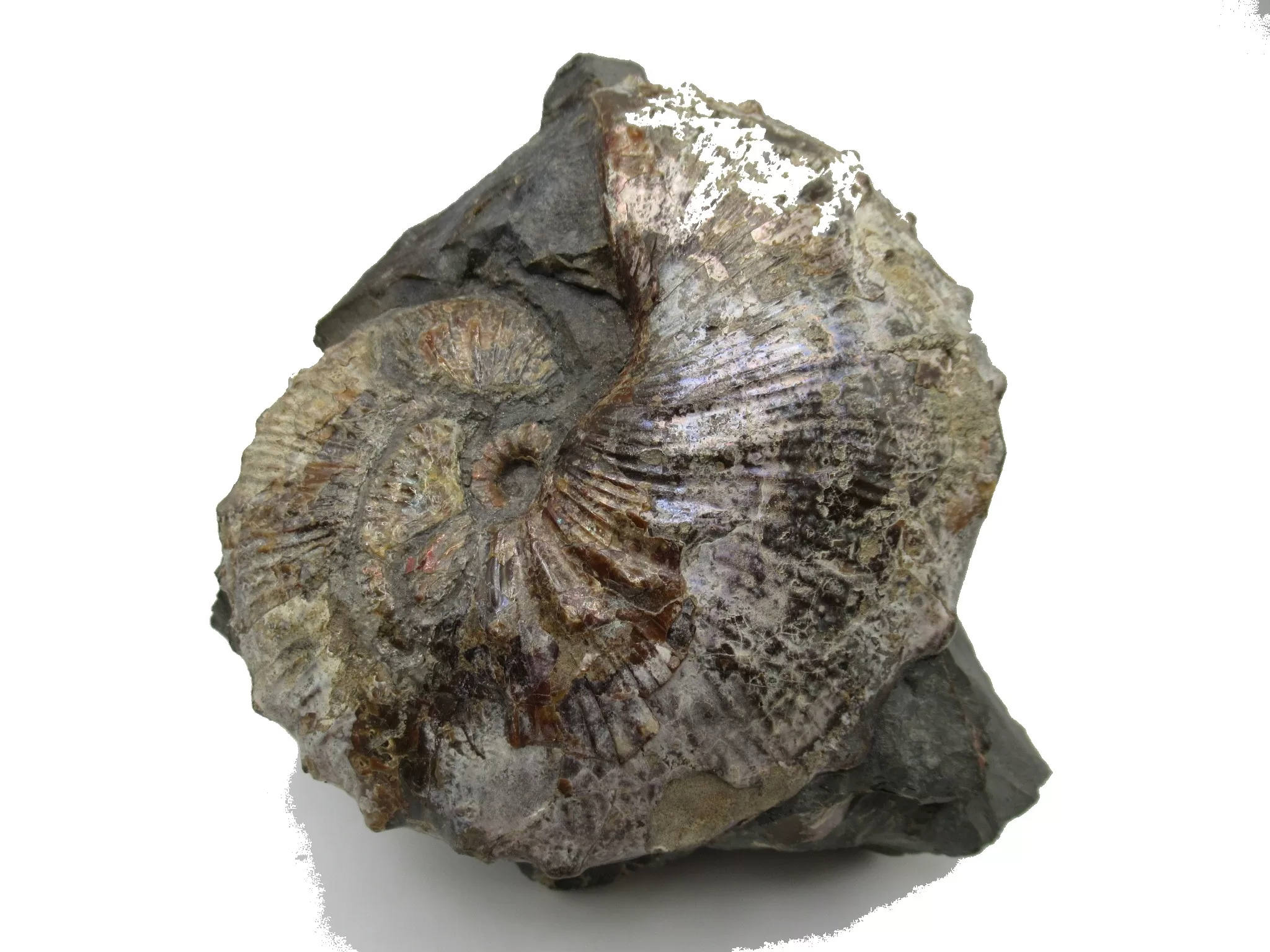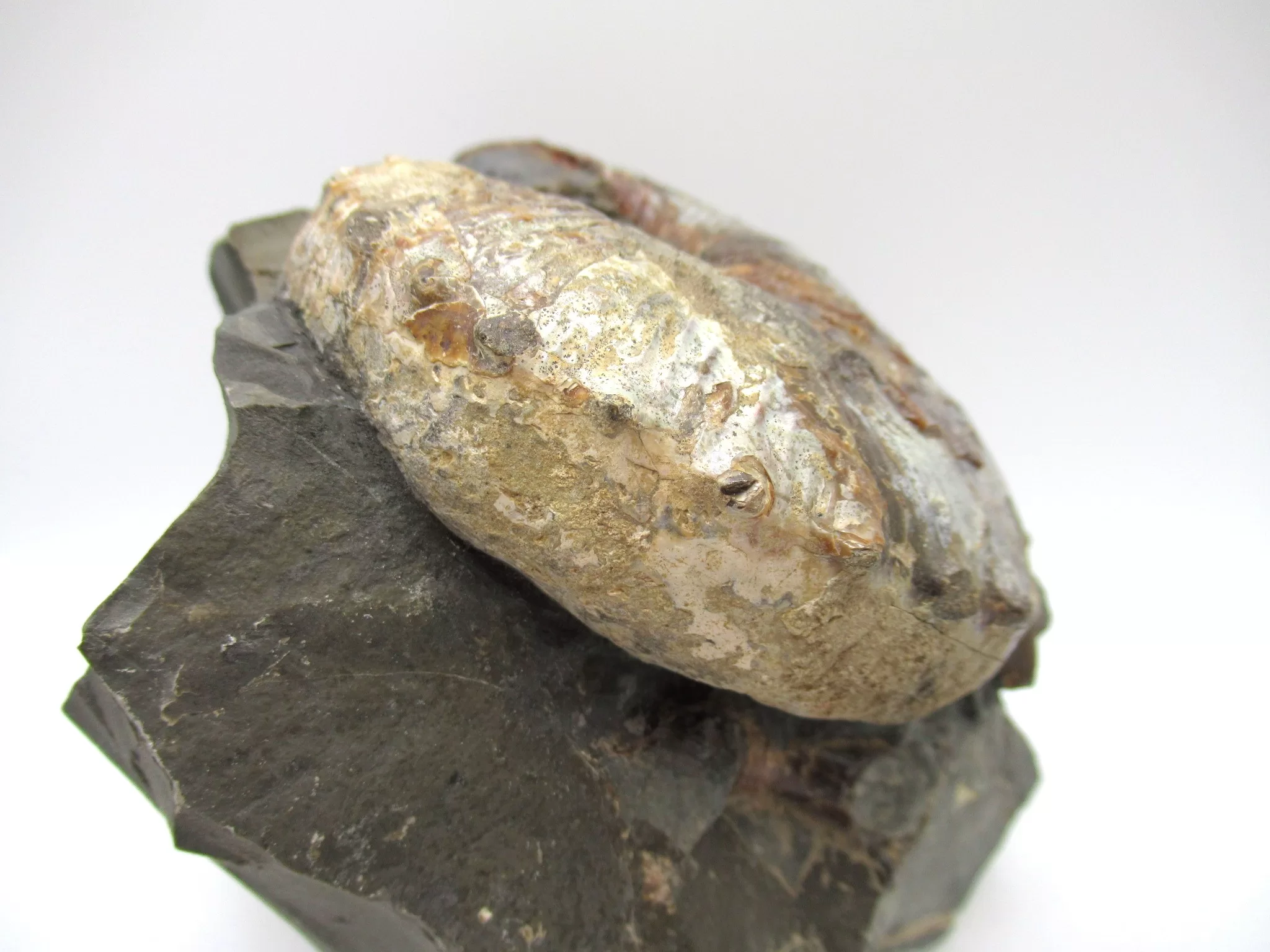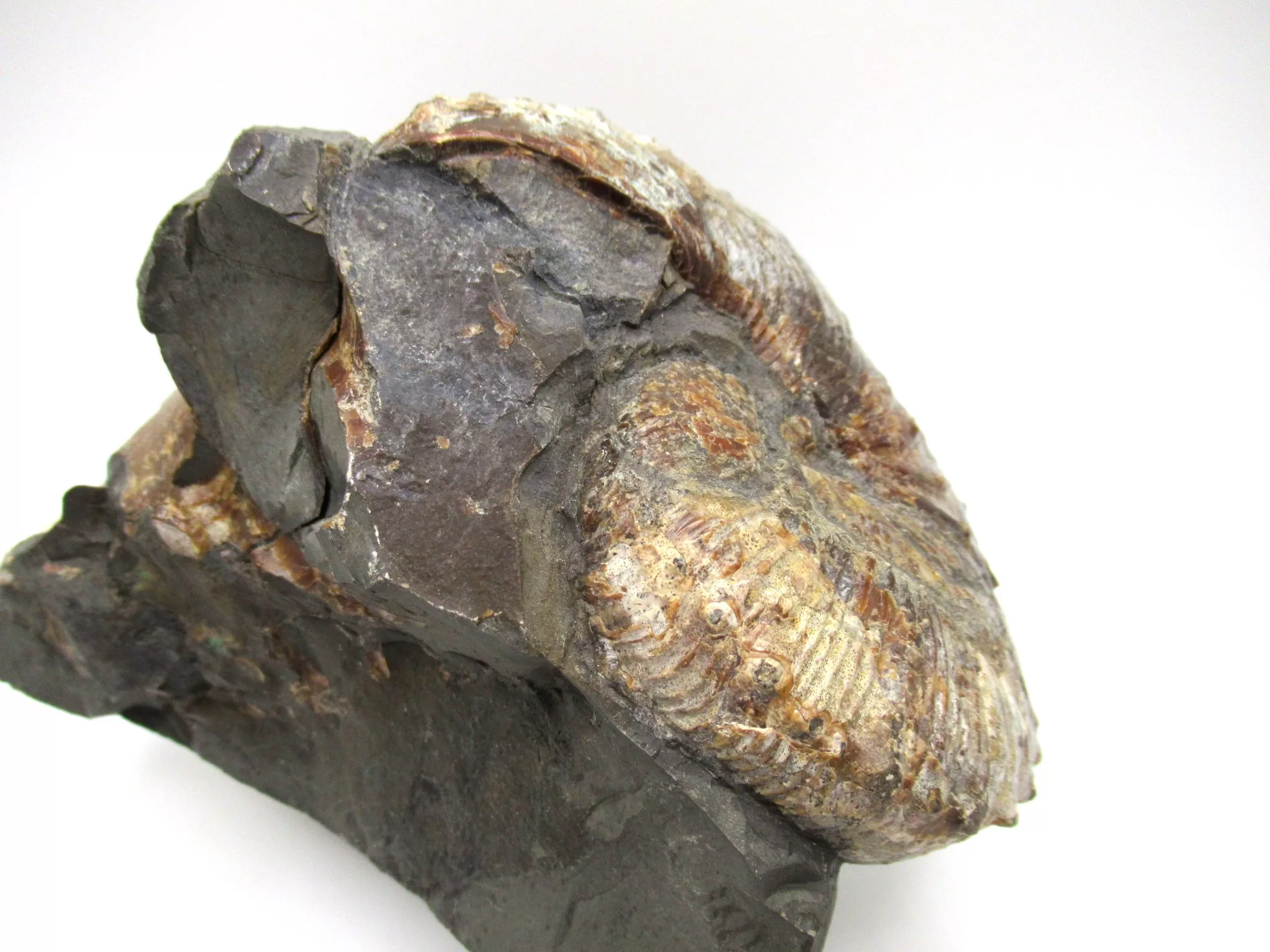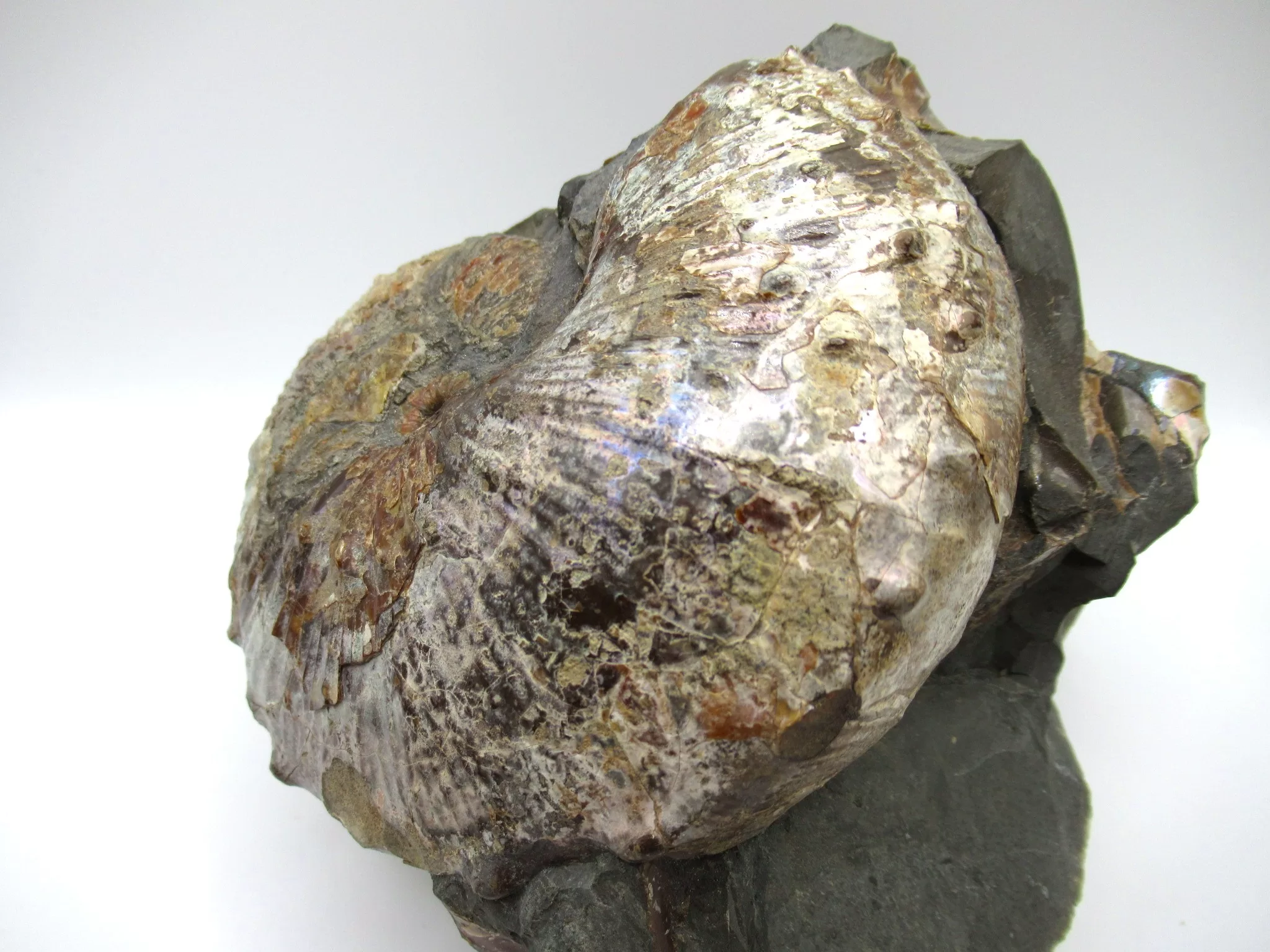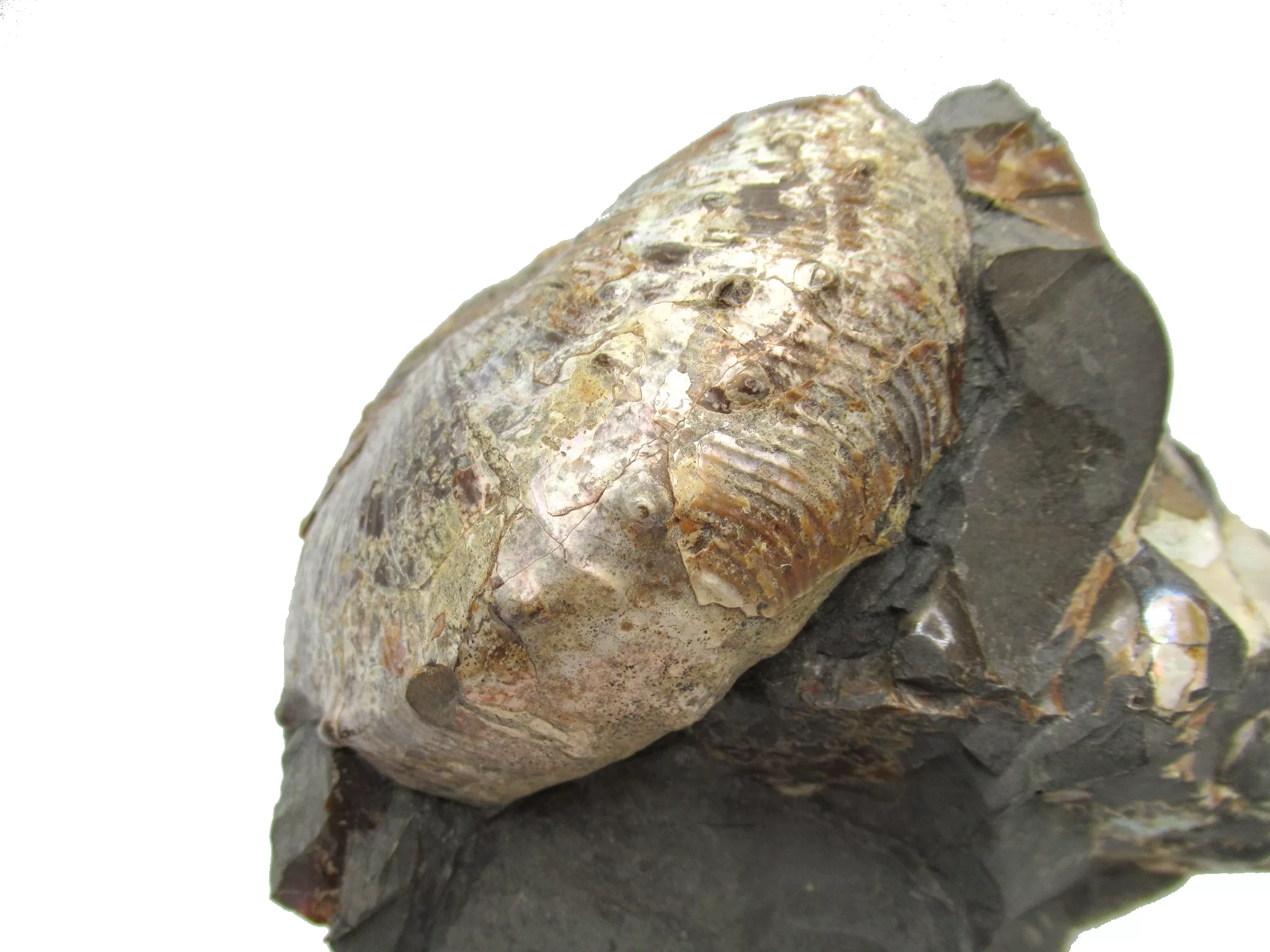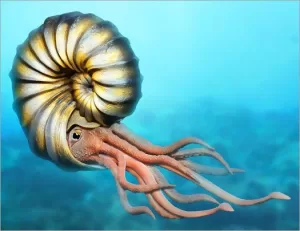Description
South Dakota Scaphites Ammonite
- Scaphites sp.
- Cretaceous Age
- Fox Hills Formation
- South Dakota
- This specimen is in it’s Natural Matrix. The Fossil Ammonite measures 4.74″ wide
- MORE Fossil Ammonites for Sale
Scaphites generally have a chambered, boat-shaped shell. The initial part of the shell is generally more or less tightly-coiled and compressed.
Ammonite is a name that comes from the Greek ram-horned God called Ammon are the most widely known fossil.
WHAT WERE AMMONITES?
Ammonite fossils are found on every continent. And come in every naturally occurring color. Because of their rapid evolution and widespread distribution, they are an excellent tool for indexing and dating rocks. If an ammonite is found in clay the clay will preserve the Ammonites mother-of-pearl luster.
Ammonites were free-floating invertebrates that were attacked by plesiosaurs and mosasaurs, two groups of gigantic marine reptiles. One way that ammonites could avoid an attack was to quickly change their buoyancy levels, zig-zagging and sinking rapidly.
Ammonites began life very tiny, less than 1mm in diameter, and were vulnerable to attack from predators. They fed on plankton and quickly assumed a strong protective outer shell. They also grew quickly with the females growing up to 400% larger than the males; because they needed the larger shell for egg production. Most ammonites only lived for two years. Some lived longer becoming very large.
HOW OLD ARE AMMONITES?
They are cephalopods and first appeared in the seas 415 million years ago, in the form of a straight-shelled creature known as Baculites. During their evolution, three catastrophic events occurred. TheY first during the Permian period (250million years ago), only 10% survived. They went on to flourish throughout the Triassic period, but at the end of this period (206 million years ago), all but one species died. Then they began to thrive from the Jurassic period until the end of the Cretaceous period when all species of ammonites became extinct.
Ammonites belong to the Mollusca phylum in a class known as cephalopods – “head-footed” creatures such as octopus and squid. They swam in ancient oceans from the Devonian Period, about 400 million years ago, to their extinction along with the dinosaurs in the Cretaceous Period, 65 million years ago.

